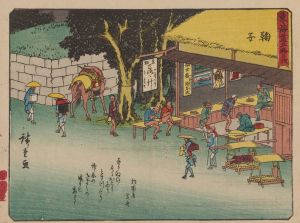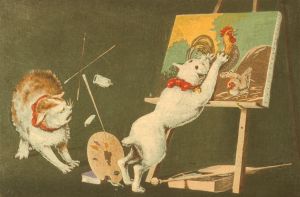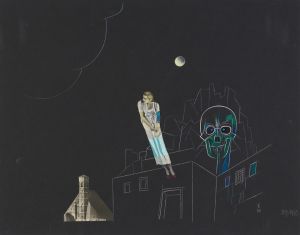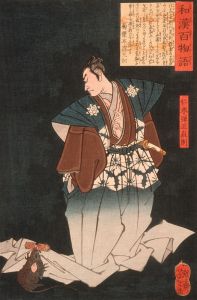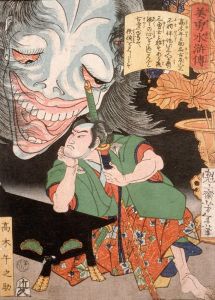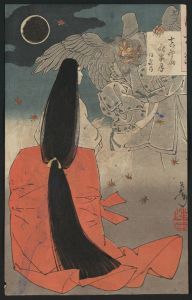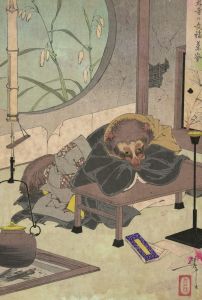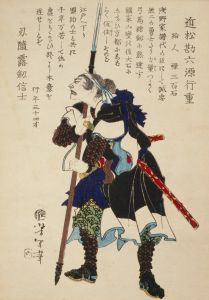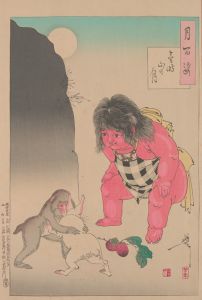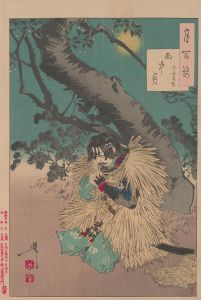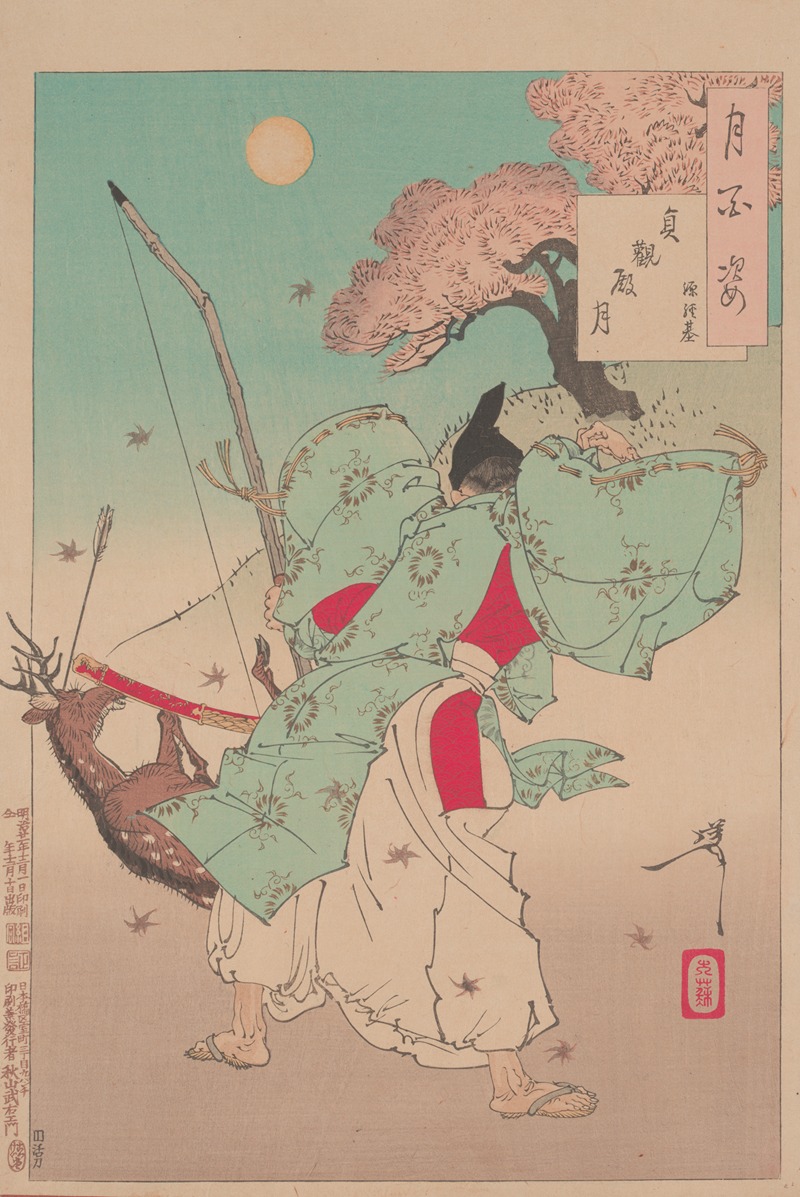
Joganden moon
A hand-painted replica of Tsukioka Yoshitoshi’s masterpiece Joganden moon, meticulously crafted by professional artists to capture the true essence of the original. Each piece is created with museum-quality canvas and rare mineral pigments, carefully painted by experienced artists with delicate brushstrokes and rich, layered colors to perfectly recreate the texture of the original artwork. Unlike machine-printed reproductions, this hand-painted version brings the painting to life, infused with the artist’s emotions and skill in every stroke. Whether for personal collection or home decoration, it instantly elevates the artistic atmosphere of any space.
Tsukioka Yoshitoshi (1839–1892) was a renowned Japanese artist known for his work in ukiyo-e, a genre of woodblock prints and paintings that flourished in Japan from the 17th through 19th centuries. Yoshitoshi is often celebrated for his innovative approach to traditional subjects and his ability to capture the complexities of human emotion and the supernatural in his art. One of his notable works is "Joganden Moon," which is part of his famous series "One Hundred Aspects of the Moon" (Tsuki hyakushi).
The "One Hundred Aspects of the Moon" series, created between 1885 and 1892, is considered one of Yoshitoshi's masterpieces. It consists of 100 woodblock prints, each depicting a scene inspired by Japanese and Chinese history, literature, folklore, or legend, all unified by the presence of the moon. This series is notable for its artistic quality, imaginative compositions, and the way it reflects Yoshitoshi's deep interest in the moon as a symbol of beauty, mystery, and the passage of time.
"Joganden Moon" is one of the prints in this series. The title refers to a specific location, Joganden, which was a part of the imperial palace in Kyoto. This print is believed to depict an episode from the life of Emperor Xuanzong of Tang, a Chinese emperor known for his patronage of the arts and his romantic involvement with the famous consort Yang Guifei. The story goes that after Yang Guifei's tragic death, Emperor Xuanzong visited Joganden, where he was said to have been comforted by the moon's serene presence.
In "Joganden Moon," Yoshitoshi captures the poignant moment with his characteristic attention to detail and emotion. The print typically features a solitary figure, often interpreted as Emperor Xuanzong, gazing at the moon, which serves as a symbol of solace and reflection. The composition is marked by its delicate lines, subtle use of color, and the interplay of light and shadow, which are hallmarks of Yoshitoshi's mature style.
Yoshitoshi's work, including "Joganden Moon," is highly regarded for its technical excellence and its ability to convey complex narratives and emotions. His prints often explore themes of beauty, melancholy, and the supernatural, reflecting both the cultural heritage of Japan and his personal artistic vision. Despite facing personal and professional challenges throughout his life, including periods of mental illness and financial difficulty, Yoshitoshi's legacy endures through his influential body of work.
Today, "Joganden Moon" and the other prints from the "One Hundred Aspects of the Moon" series are celebrated for their artistic and cultural significance. They are studied and admired by art historians, collectors, and enthusiasts around the world, and they continue to be exhibited in museums and galleries, offering insight into the rich tradition of ukiyo-e and the unique vision of Tsukioka Yoshitoshi.





